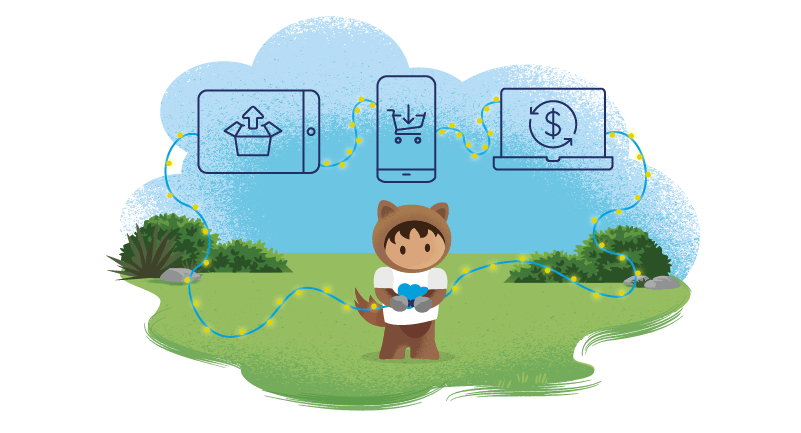The Path for Wholesale Telecommunications: 3 Strategies for the Future
The pandemic has pushed wholesale telecommunications carriers harder than ever to show flexibility and agility — especially as margins on traditional revenue streams shrink and spend increases on 5G network infrastructure.
For years, wholesale telecommunications carriers have been seeking fresh revenue sources. Voice and messaging has moved to over-the-top (OTT) options, like Facebook, Google, and WhatsApp. Meanwhile, non-traditional companies have turned into competitors. With pandemic-related shutdowns came rearranged-network traffic: data and voice — volume shot up while roaming collapsed. Customer behaviors are still in flux.
Customer loyalty and satisfaction are now at increased risk. Wholesale telecommunications carriers need to become easier to do business with, and they need to manage their business more effectively. Otherwise customers may switch faster than ever to competitors that offer more convenience, ease, and a better experience.
How do you revamp your wholesale telecommunications strategy?

- INDIRECT SUPPLIER OR RESELLER
You may purchase services from another carrier to extend network capacity for a customer, such as a managed software-defined wide-area network (SD-WAN).

- MUTUAL BUYER
Simply put, carriers buy from one another for their internal projects. For example, you may need last-mile connectivity from another carrier in order to activate a new 5G radio.

- RESELLER OR SYSTEMS INTEGRATOR
You may purchase services and resell them as part of a specific application. For example, a systems integrator may purchase and resell connectivity as part of a complete IT managed-services package.
To find agility, bring data together. Unifying service and product catalogs simplifies and expedites the buying process so that customers easily quote, sell, and deliver information and communications technology (ICT).
Standardizing interfaces, streamlining buy-flows, and improving self-service makes it easier for operators to do business with you. With a holistic view, you can improve care operations and thus increase loyalty and decrease churn. And, access to the right data helps you better manage the business, predict your trajectory, and take the best actions to stay on track.
But you have to crawl before you can walk. Consider these steps to evolve your wholesale telecommunications strategy.

1. Start with one wholesale telecommunications service
Define your minimal viable product (MVP). The idea is to launch, get learnings from real user testing, and use those insights to improve your customer and employee experiences in a discreet area — instead of trying to do everything in one fell swoop. From there, you can iterate and move on to the next initiative. This approach helps you get to market faster and makes the whole digitization process easier for your stakeholders.
- Enable your sales team. Equip reps with a sales automation platform like Sales Cloud to track leads and maintain relationships with operators. Opportunities, quotes, and orders — including those created through portals and application programming interfaces (APIs) — are instantly visible and manageable because everyone has access to the same datasets for accurate forecasts and improved customer experiences. Collaborative account planning and account-based marketing tools attract operators as new customers and expand your share of wallet with existing accounts.
Plus, automation helps to eliminate busy work, such as manual updates to carrier profiles or order status. Artificial intelligence (AI) empowers teams to make smarter selling decisions by analyzing data and recommending actions. AI also increases revenue by suggesting complimentary products and next best offers. - Orchestrate the order process. Accelerate the lead-to-order cycle time across channels. Wth complete visibility and integration to multiple service order management systems, your customers and teams ensure order accuracy and timeliness. Automated process management (and escalation when needed) keeps everyone informed, which minimizes order delays and fallout.
- Empower service agents. Connect sales and service so that whenever a customer reaches out with a question, agents have a complete view of the relationship — including asset inventory, circuit details, service history, past interactions, and a lifetime value score. They know when they need to escalate to a sales rep or can resolve the issue on their own.
- Accelerate go-to-market strategies. An integrated, cloud-based digital business support system (BSS) gives product and offer management teams the ability to adjust offers and introduce new products in hours and days. Teams create frictionless buy-flows to guide customers through complex quotes and multisite, asset-based orders. This minimizes abandoned orders, fallout, delays, and pre-install churn.

2. Connect your digital ecosystem
Once you have the foundation in place, find ways to connect your ecosystem so that you can launch new products quickly, further simplify digital ordering, and monetize services.
Unify teams, partners, and data with a flexible, industry-specific platform like Communications Cloud. Prebuilt industry processes based on industry standards, industry-specific data models, and user experience templates help you to go live quickly and onboard partners rapidly. MuleSoft orchestrates APIs to consolidate data across technology systems into a single platform so that you can enable workflows for wholesale services, automate the quote process, complete orders, and verify fulfillment.

3. Commit to a cycle of innovation
Getting started: Prepare for the future of wholesale telecommunications
Wholesale telecommunications services have historically been low-margin. But rising consumer expectations and changes to the ways in which people communicate are offering this sector new opportunities to grow and thrive. Digital innovation holds the key to meeting the new demand, wherever it may arise, and creating a culture of customer loyalty.
- Discover the top telecom strategies to drive revenue and take 5G beyond connectivity. Read the report.
- See how to get started on your journey with Communications Cloud. Learn more.

report
Taking 5G Beyond Connectivity: Growing the B2B2X Business

Playbook
The Intelligence Playbook for Communications Service Providers

Article
What is an API? (Application Programming Interface)
More resources

The Future of 5G Connectivity: How 23 Global Telcos Are Embracing 5G

Subscribe to a Better Customer Experience



